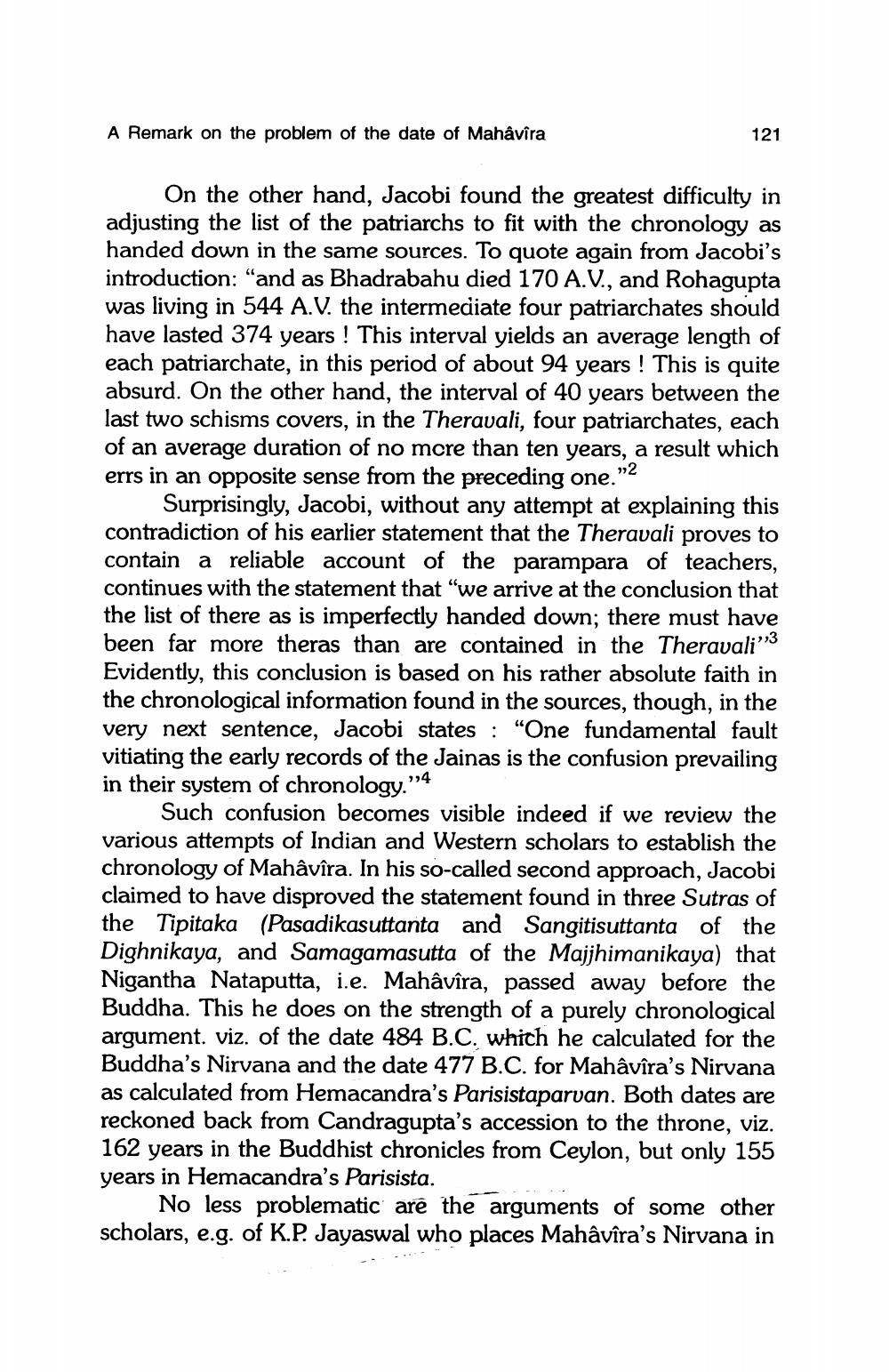________________
A Remark on the problem of the date of Mahavira
121
On the other hand, Jacobi found the greatest difficulty in adjusting the list of the patriarchs to fit with the chronology as handed down in the same sources. To quote again from Jacobi's introduction: "and as Bhadrabahu died 170 A.V., and Rohagupta was living in 544 A.V. the intermediate four patriarchates should have lasted 374 years ! This interval yields an average length of each patriarchate, in this period of about 94 years ! This is quite absurd. On the other hand, the interval of 40 years between the last two schisms covers, in the Theravali, four patriarchates, each of an average duration of no mcre than ten years, a result which errs in an opposite sense from the preceding one."2
Surprisingly, Jacobi, without any attempt at explaining this contradiction of his earlier statement that the Theravali proves to contain a reliable account of the parampara of teachers, continues with the statement that "we arrive at the conclusion that the list of there as is imperfectly handed down; there must have been far more theras than are contained in the Theravali" Evidently, this conclusion is based on his rather absolute faith in the chronological information found in the sources, though, in the very next sentence, Jacobi states: “One fundamental fault vitiating the early records of the Jainas is the confusion prevailing in their system of chronology.">4
Such confusion becomes visible indeed if we review the various attempts of Indian and Western scholars to establish the chronology of Mahâvîra. In his so-called second approach, Jacobi claimed to have disproved the statement found in three Sutras of the Tipitaka (Pasadikasuttanta and Sangitisuttanta of the Dighnikaya, and Samagamasutta of the Majjhimanikaya) that Nigantha Nataputta, i.e. Mahâvîra, passed away before the Buddha. This he does on the strength of a purely chronological argument. viz. of the date 484 B.C. which he calculated for the Buddha's Nirvana and the date 477 B.C. for Mahâvîra's Nirvana as calculated from Hemacandra's Parisistaparvan. Both dates are reckoned back from Candragupta's accession to the throne, viz. 162 years in the Buddhist chronicles from Ceylon, but only 155 years in Hemacandra's Parisista.
No less problematic are the arguments of some other scholars, e.g. of K.P. Jayaswal who places Mahâvîra's Nirvana in




